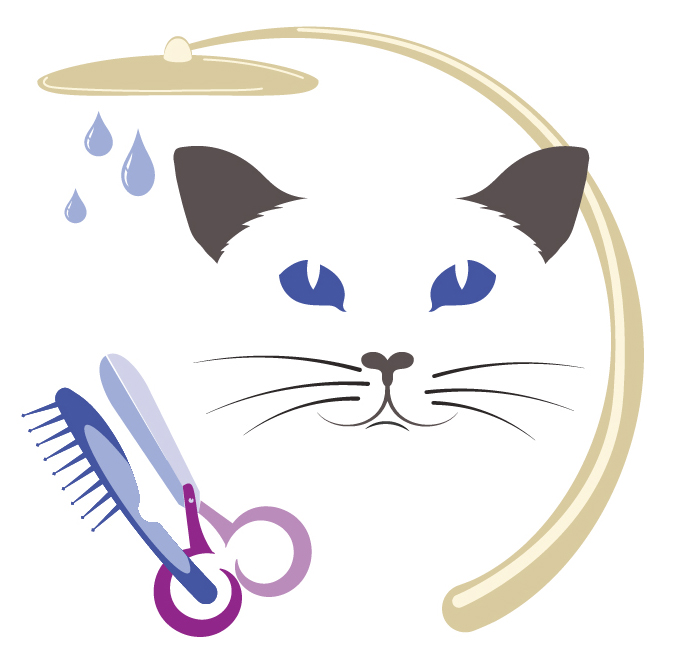(or “Cleanliness is next to…”)

Above and beyond anything else, your cat should be clean when you put her into the judging ring. “Clean” means just that…..clean. Not just combed out and fluffed up a bit, but free from dirt, oil, and all miscellaneous ‘gunk’ that accrues on a cat. Think of it this way…would you show up for a job interview or a formal event having just rolled out of bed, looking disheveled, unbathed, and with no makekup or not shaving? Your cat shouldn’t either!
Learning to groom your cat properly is an essential part of showing her. As grooming techniques and necessities vary from breed to breed (and even from cat to cat within the breed), we won’t be looking at specific grooming techniques. Instead, we will focus on what the judge expects to see (and NOT see) when you put your cat up in the ring and some of the foundation aspects of good grooming.
1. All cats should be bathed.
The amount and type of bathing will vary by breed, color, and cat, but they should all be bathed prior to the show (with the possible exception of some individuals in the Oriental-style category, who still would be wiped down and completely groomed otherwise). This will both remove all dirt and oil from the coat, as well as loose or dead hair that may inhibit new hair from coming in. It will also remove any remains of body excretions.
2. All cats should be combed.
Meaning that the hair should be free of mats, tangles, and knots and all loose hair. Some breeds (such as the various Rex-coated breeds) would be combed out differently than others. A judge will not be pleased if he puts his hands underneath the cat and encounters a mass of mats and tangles! No, your cat may not like having her belly combed, but that’s just a part of being a well-groomed show cat.
3. Remove all debris and detritus from every orifice.
This means completely clean out all ear wax prior to the start of the show and check in it during the day. Prior to going up in each ring, check your cats’ eyes for gunk and wipe any out. Same for the nostrils. Check her rear for dirt or feces and completely remove any little “something extras.”
4. Also check for any additional material that may have adhered to your cat.
Longhairs especially, but shorthairs as well can end up with litter, excess hair, cotton balls, and even toys attached to their fur.
